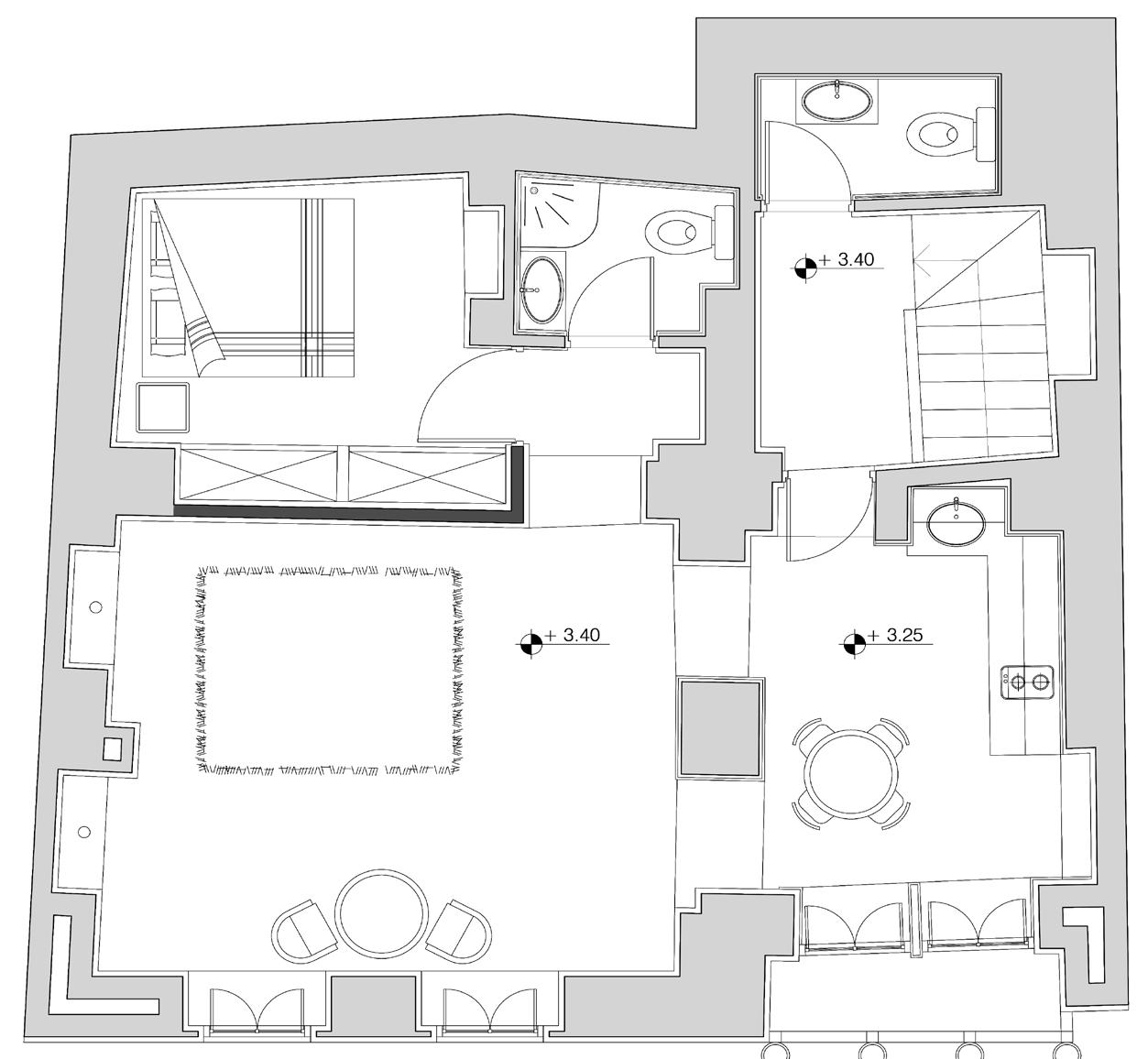
1 minute read
M A S O U L E H H O U S E
2018 | Aba Azhianeh Consultant
Team: M. Hojjati, P. Parsazadeh, A. Sasanian
Advertisement
Advisor: Prof. M. Hojjati
Type: Residential/Restoration | Location: Masouleh, Iran
The subject of this renovation project is a house in Masouleh, an Iranian historical town with distinctive architecture. We were not permitted to alter the building’s basic form or structure since it is owned by the Cultural Heritage Organization. As a result, focusing on architectural details was inherent. One of the main objectives of the project was to be contextual and retain the nostalgic sense of living in this town. This project has been constructed.
Since Masouleh town receives a very large amount of visitors throughout the year, many local residents of this town host tourists in their beautiful traditional rooms for rent. The client for this project wanted to use his home as a rental for tourists as well.
Ground Floor Plan Before Restoration)
First Floor Plan (Before Restoration)

Ground
First Floor Plan (After Restoration)


To maintain the traditional architectural spirit sandblasted wood is used as as the main material. Ornaments, an inseparable part of traditional Iranian architecture, are elaborately observed, There are various wooden decorations with Arabesque1 and Geometric patterns as well as traditional Girih2 tiles, decorative stepped ceiling, exposed roofing, colorful window glasses and so on.
1 The Arabesque is a type of artistic decoration that consists of “surface decorations based on rhythmic linear patterns of scrolling and interlacing foliage, tendrils, or plain lines,” which are frequently combined with other elements.
2 Girih are decorative Islamic geometric patterns used in architecture and handicraft objects, consisting of angled lines that form an interlaced strapwork pattern.
The functionality of some of the spaces of the house has been modified so that they can be used by two families at the same time. (for the tourist rental)aaaaaaaaaaaaaaaaaaaaaaaaaaaaa
Keeping the traditional fireplace to maintain the warm environment, as well as using familiar textures and colors, has added to the feeling of the space. One example is the “Termeh”1 tablecloth in the picture, which has beautiful Paisley2 patterns on it.
1 A type of precious fabric made of fluff, wool, or silk with Paisley, Arabesque, and other patterns, typically used to make prayer mats, napkins, and clothing.
2 Paisley or paisley pattern is an ornamental textile design using the boteh or buta, a teardrop-shaped motif with a curved upper end.






